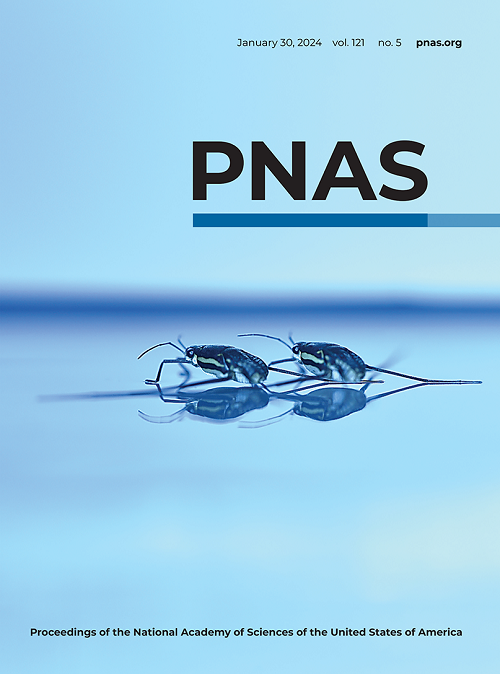Distinct oxytocin signaling pathways synergistically mediate rescue-like behavior in mice
IF 9.4
1区 综合性期刊
Q1 MULTIDISCIPLINARY SCIENCES
Proceedings of the National Academy of Sciences of the United States of America
Pub Date : 2025-04-23
DOI:10.1073/pnas.2423374122
引用次数: 0
Abstract
Spontaneous rescue behavior enhances the well-being and survival of social animals, yet the neural mechanisms underlying the recognition and response to conspecifics in need remain unclear. Here, we report that observer mice experience distress when encountering anesthetized conspecifics, prompting spontaneous rescue-like behavior toward the unconscious mice. This behavior facilitates the earlier awakening of anesthetized mice while simultaneously alleviating stress in the helper mice. Our findings reveal that endogenous oxytocin (OXT) release from the hypothalamic paraventricular nucleus (PVN) to the oxytocin receptor (OXTR) in the central nucleus of the amygdala (CeA) regulates the emotional component of rescue-like behavior. In contrast, OXT release from the PVN to OXTR in the dorsal bed nucleus of the stria terminalis (dBNST) mediates the motor component of the behavior. Furthermore, we demonstrate that these two pathways exhibited distinct temporal dynamics and functional roles. The OXT不同的催产素信号通路协同介导小鼠的救援样行为
自发的救援行为提高了社会性动物的幸福感和生存能力,但其识别和响应同类需求的神经机制尚不清楚。在这里,我们报告了观察小鼠在遇到麻醉的同种动物时会感到痛苦,促使自发的对无意识小鼠的救援行为。这种行为促进了麻醉小鼠的早期觉醒,同时减轻了辅助小鼠的压力。我们的研究结果表明,内源性催产素(OXT)从下丘脑室旁核(PVN)释放到杏仁核中央核(CeA)的催产素受体(OXTR)调节救援样行为的情绪成分。相反,从PVN释放到终纹背床核(dBNST)的OXT介导了该行为的运动成分。此外,我们证明了这两种途径表现出不同的时间动态和功能角色。OXT PVN -OXTR CeA通路以短暂和强烈的方式激活,作为救援样行为的触发因素,而OXT PVN -OXTR dBNST通路以持续的方式响应,确保行为的延续。这些发现强调了啮齿类动物参与有针对性的帮助行为的非凡能力,并表明不同的皮质下催产素能通路选择性地协同调节救援行为的运动和情感方面。
本文章由计算机程序翻译,如有差异,请以英文原文为准。
求助全文
约1分钟内获得全文
求助全文
来源期刊
CiteScore
19.00
自引率
0.90%
发文量
3575
审稿时长
2.5 months
期刊介绍:
The Proceedings of the National Academy of Sciences (PNAS), a peer-reviewed journal of the National Academy of Sciences (NAS), serves as an authoritative source for high-impact, original research across the biological, physical, and social sciences. With a global scope, the journal welcomes submissions from researchers worldwide, making it an inclusive platform for advancing scientific knowledge.

 求助内容:
求助内容: 应助结果提醒方式:
应助结果提醒方式:


